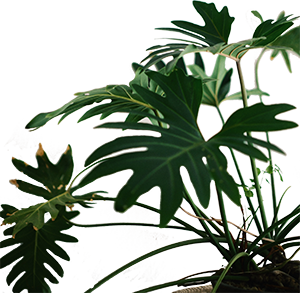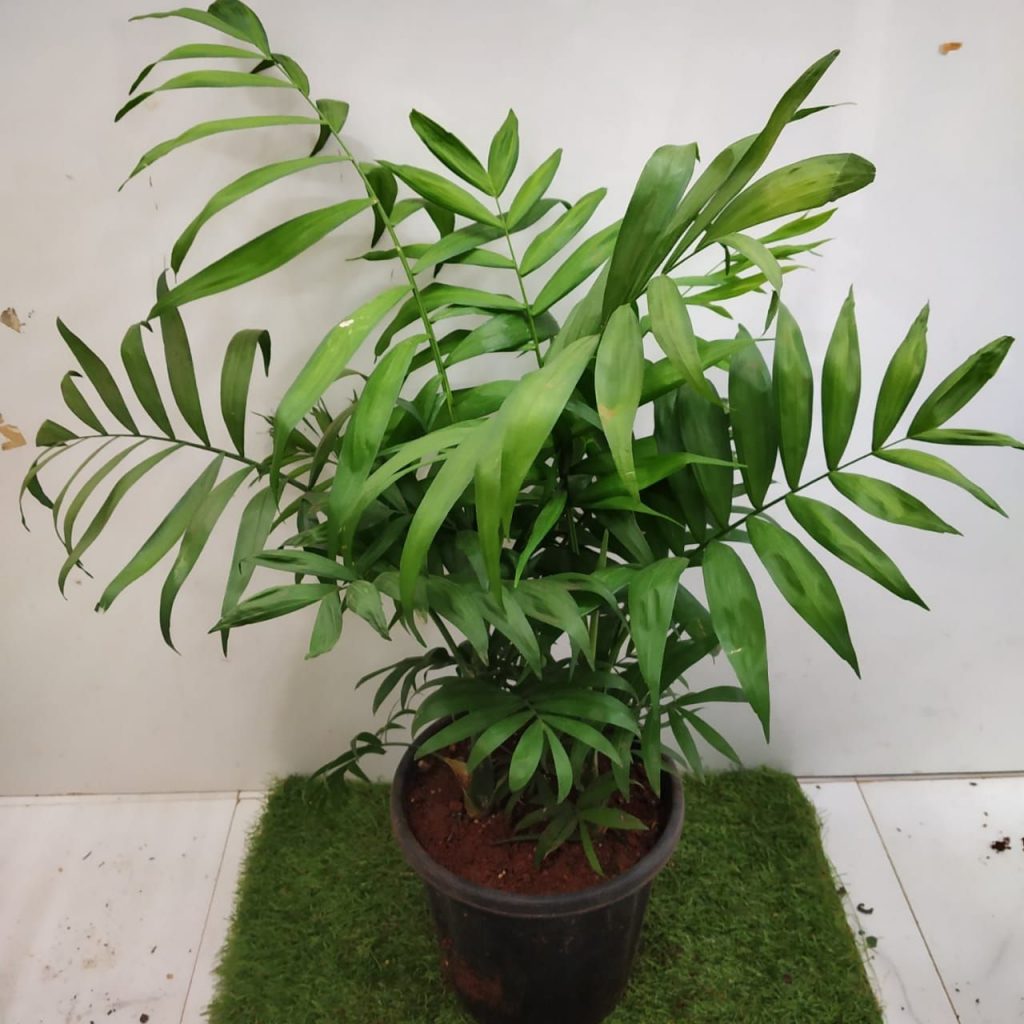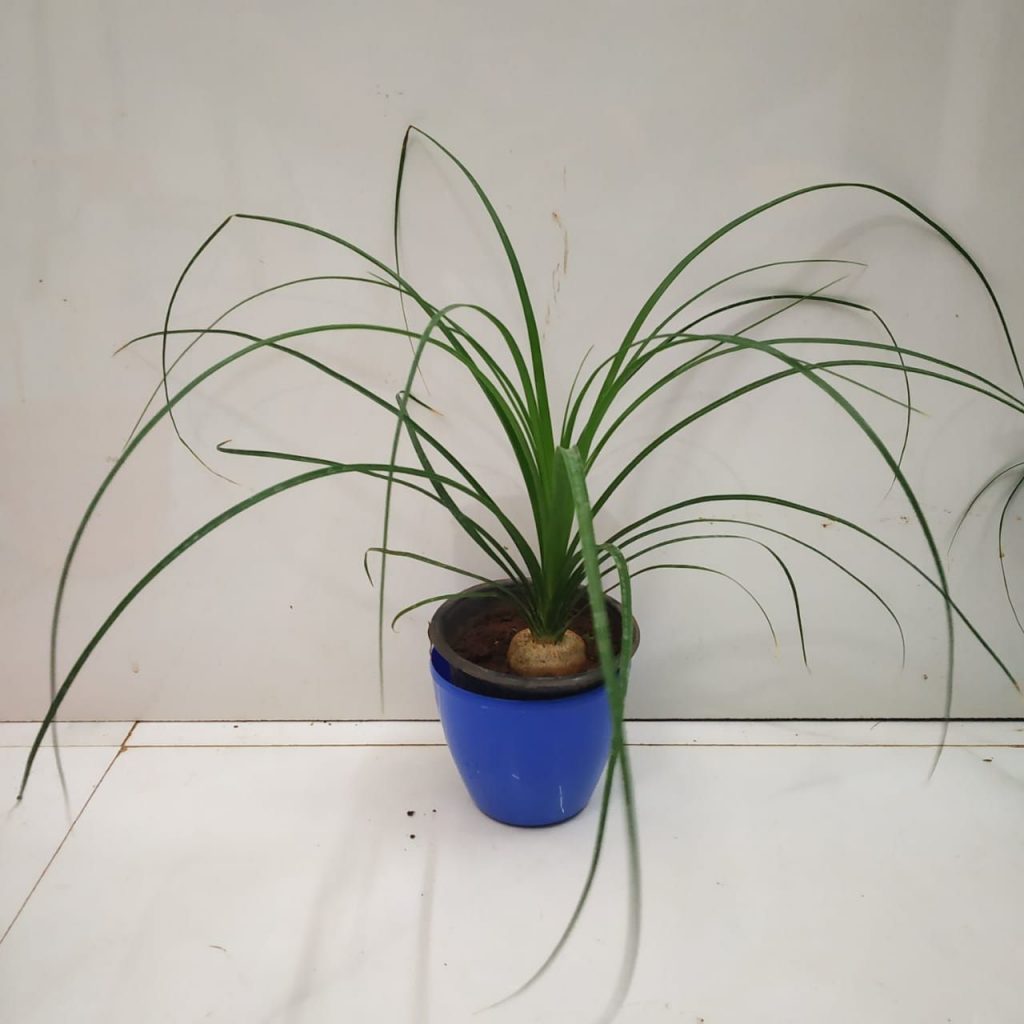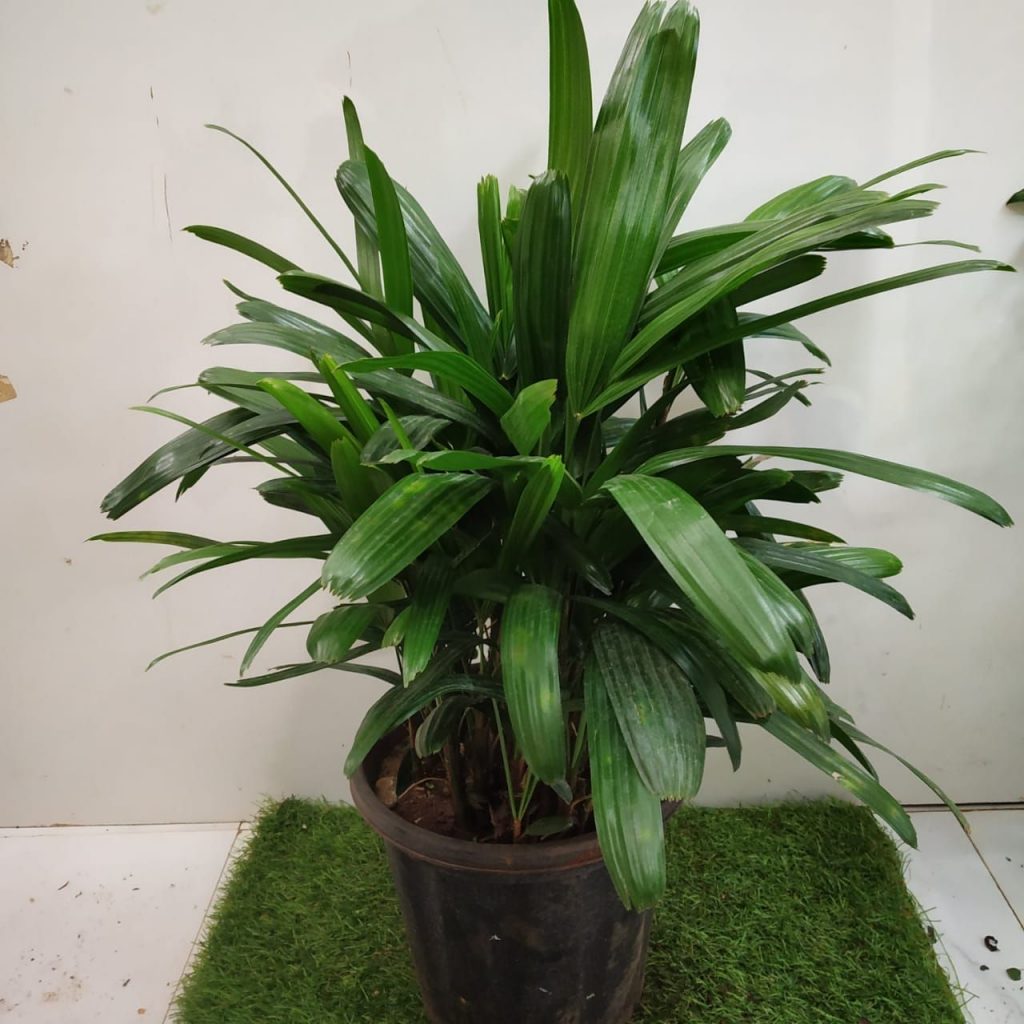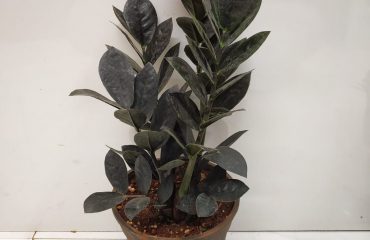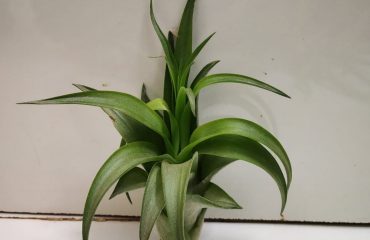How to Care for Palm Plants
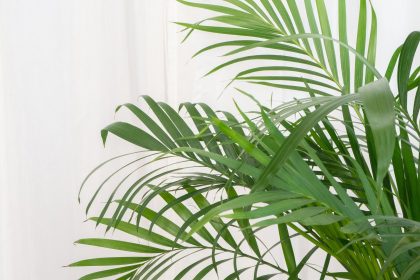
There are about 2,600 species of palm trees, most tropical or subtropical. Most palms are distinguished by their large, compound, evergreen leaves, known as fronds, arranged at the top of an unbranched stem. They are a distinctive and potentially wonderful indoor plant.
Palm plants are fun to collect, and pretty darn easy to care for. Plus there are lots of benefits of growing them indoors. If you want to create an indoor jungle, then you’ll definitely need to add a few of these beauties to your collection.
DIFFERENT TYPES OF PALM HOUSEPLANTS
Like I mentioned above, there are tons of different palm plants that make excellent houseplants.
They don’t all look exactly the same, and some palm plant varieties don’t even look like what you would imagine. So, keep that in mind while you’re out shopping for new indoor tropical plants.
Here are a few of the most common types of palms for indoors that you might find for sale online or at your local garden center.
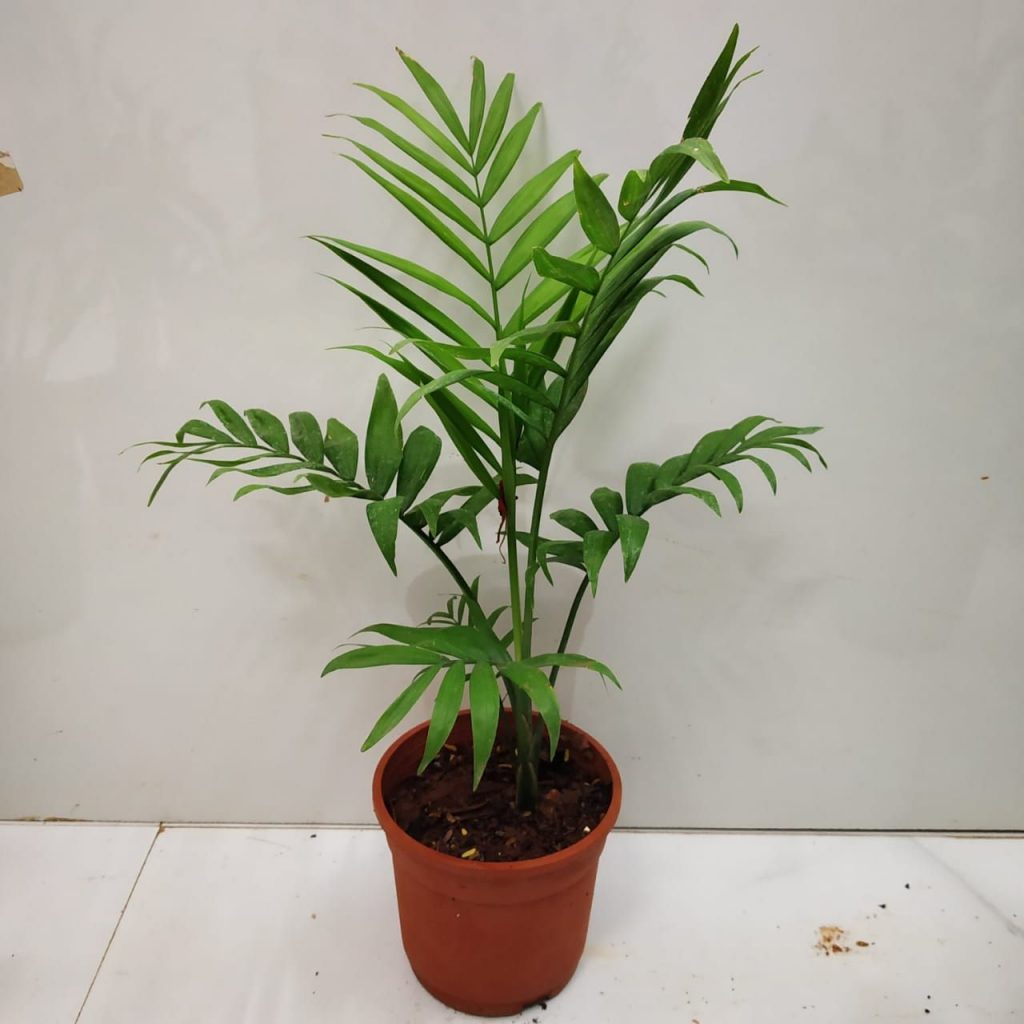
- Areca palm tree
- Ponytail plant
- Parlor palm
- Majesty palm tree
- Fan palm
- Cateracterum palm
- Sentry palm
- Yucca palm
- Butterfly palm
BENEFITS OF GROWING TROPICAL INDOOR PALMS
Palms make excellent houseplants because they are very tolerant of neglect, but they will grow their best when given the proper indoor palm plant care.
These easy care indoor plants are perfect for most homeowners because they don’t like a lot of light, and will easily adapt to growing indoors.
Plus, palm plants help to clean the air in our homes, which is another wonderful benefit of growing tropical indoor palms.
Palm plants can live for many years when they’re cared for properly, and some palm varieties can grow into huge palm trees in containers indoors.
Basic Care for Your Indoor Palm Plants
There are many different types of palm plants and each of them may have their own specific needs, but their overall care requirements are similar. The correct amount of water and light as well as the right temperature range is very important for these plants. Fertilizer and a little bit of pruning maintenance can also do a lot to keep these plants looking full, green, and vibrant.
Watering Your Indoor Palm Plants
Palms like a lot of water but it is possible to overwater them and create root rot or suffocate their roots. It’s a very good idea to always use pots with drainage holes to help prevent overwatering. Water them deeply until you see water coming out of the drainage holes, then empty the drainage tray to prevent excess water from soaking back up into the soil and creating an overly wet atmosphere for the root system.
You only need to water these plants when the top 1/4 to 1/2 inch of soil is dry. They do like a humid atmosphere so misting them daily with a spray bottle will keep them sufficiently moist. Low humidity can be a issue for these types of plants and may cause them to dry out.
Lighting for Your Indoor Palm Plants
Palm plants have a very tropical and exotic appearance so you would think they would require plenty of hot, bright sunlight but sometimes this isn’t the case. Some species of palms do love lots of bright, direct sunlight but many prefer indirect or filtered light, or may even do well in low light. It’s important to know what your specific type of palm prefers so you can provide it with the appropriate lighting conditions.
Temperature for Your Indoor Palm Plants
Some types of palms are heartier than others but palm plants generally like a pretty balmy climate. Their typical daily temperature preference is between 20 to 30 degrees C with nighttime temperatures dropping no lower than 20 degrees C. This range definitely can vary between species but palms typically won’t like too much chilly air or being placed near a cool draft.
Soil and Fertilizer for Your Indoor Palm Plants
Palm plants can develop root rot if left to sit in a stagnant marsh. Too much water in the soil can also deprive their roots of oxygen and eventually kill them. It’s important to use a well draining potting mix, such as soils with perlite or vermiculite, to prevent water from pooling in the soil.
Palms can also benefit from a bit of fertilizer during their active growing season, which ranges from late winter to early fall. Too much fertilizer, however, can cause fertilizer burn, or leaf scorch, which comes from a build of salts in the soil. Using a slow-release fertilizer or a diluted liquid fertilizer can help to prevent this.
Repotting Your Indoor Palm Plants
For anyone familiar with indoor gardening, you may know that repotting your plants from time to time is a necessary step in providing the best care for them. However, for palm plants, repotting should only be done when absolutely necessary. Many species of palm plants really don’t like their root system to be disturbed too much and some even thrive on being pot bound.
When you do need to repot these plants, be as gentle as possible and then treat them very delicately for a while after to give them time to adjust. Don’t give them any direct sun or fertilizer for the new few weeks after their repotting but do give them a healthy watering. Some palm plants can grow quite large so withholding a larger pot for as long as possible will also help to control their growth.
Propagating Indoor Palm Trees
For most palms, air layering, cuttings, and division are for the most part not effective when starting palm trees. Usually, the best way to start a palm tree is from seed.
Although, certain varieties are successful for transplantation, like sago palms, date palms, or ponytail palms, which will produce offshoots called pups. These palm pups are an excellent way to propagate the plant.
Pests Invading Your Indoor Palm Plants
Indoor plants are usually a little safer from pests than the outdoor variety but that doesn’t mean pests can’t still get to your plants. Spider mites are the most common problem for indoor palm plants but you may see mealybugs trying to feed off your palms as well. If you notice the fronds on your plants turning yellow or wilting, look for an infestation. If you do have a pest problem it’s better for your plants to wash the fronds with warm soapy water every couple of days until the problem is resolved rather than treating them with any harsh pesticides.
Signs Your Indoor Palm Plant Is in Trouble
Incorrect temperature, too much light, not enough light, overwatering, underwatering, and pests are all possible issues that could be harming your indoor palm plants. If your palm has gray or brown scorched leaves they may be getting to much sun or they have have been given too much fertilizer. A shadier spot or a deep watering to cleanse the soil could remedy these issues. Brownish leaves could also mean your plant is too cold. If you suspect this is the issue, check for any cool drafts nearby or move your plant to a warmer location.
Dried, brown leaf tips can often be a sign that your plant needs more water. Yellowing fronds, on the other hand, may indicate your plant has too much water and can’t access the oxygen in the soil. Yellow, drooping fronds could also mean your plants needs more sunlight.


